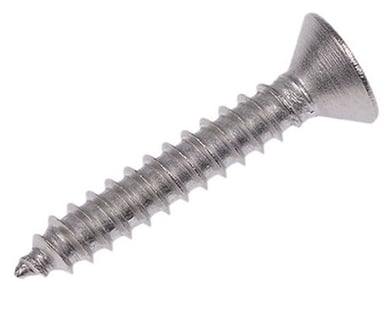msmenggworks87@gmail.com | +91 9207000035 | Industrial Area, Phase-1, Chandigarh
How to Improve Efficiency with Self-Tapping Screws
M.S.M Engineering Works
7/20/20242 min read


Introduction
Self-tapping screws have revolutionized assembly processes across various industries by eliminating the need for pre-drilled holes and reducing assembly time. Here’s how you can leverage their efficiency to optimize your manufacturing or construction projects:
1. Choosing the Right Type of Self-Tapping Screw:
Thread Design: Select screws with threads appropriate for the material you're fastening into (e.g., coarse threads for wood, fine threads for metal).
Point Type: Consider the point type (e.g., drill point, sharp point) based on the material thickness and hardness to ensure efficient penetration.
2. Ensuring Proper Pilot Hole Size:
While self-tapping screws can create their own threads, providing a small pilot hole can facilitate easier and more accurate insertion, especially in harder materials.
3. Using the Correct Installation Tools:
Power Screwdrivers or Drills: Utilize power tools with adjustable torque settings to ensure screws are driven in at the correct depth without damaging the material or the screw head.
Impact Drivers: For tougher materials or larger screws, impact drivers provide additional torque and reduce the effort required during installation.
4. Preventing Over-Drilling:
Carefully monitor the torque and depth settings to avoid over-driving the screws, which can weaken the material or strip the threads.
5. Considering Environmental Factors:
Corrosion Resistance: Choose self-tapping screws made from materials (e.g., stainless steel, zinc-coated) that offer corrosion resistance suitable for the environment they will be used in.
Temperature and Moisture: Ensure screws are suitable for temperature fluctuations and moisture levels in the application environment to maintain long-term integrity.
6. Quality Control and Maintenance:
Regularly inspect and replace worn or damaged screws to maintain assembly efficiency and product reliability.
Implement preventive maintenance schedules for equipment and tools involved in screw installation to minimize downtime and ensure consistent performance.
7. Training and Best Practices:
Train assembly personnel on proper installation techniques and the importance of using the correct screws for each application.
Document best practices and troubleshooting guidelines to address common issues quickly and maintain productivity.
Benefits of Using Self-Tapping Screws:
Time Savings: Eliminate the need for drilling pilot holes, reducing assembly time significantly.
Cost Efficiency: Lower labour costs and fewer tools required for assembly compared to traditional fastening methods.
Versatility: Suitable for a wide range of materials and applications, enhancing flexibility in design and construction.
By optimizing the selection and installation of self-tapping screws and implementing best practices, you can improve efficiency, reduce costs, and enhance the reliability of your assembly processes. These screws offer a versatile solution for fastening in diverse industries, from automotive manufacturing to construction projects, where speed and precision are paramount.
Contact Us Today for Assistance
Have questions or need assistance? Contact us today to speak with a fastener expert! Ready to start your project? Request a free quote now!
Expert
+91 6280-801105
Quote

Quality Fasteners for Your Projects
Explore our wide range of fasteners and get expert advice today!
Not sure which screw?
Contact our team now!
Find the right fastener
Partner
Trusted name in the industry, offering top-notch products
Quality
Contact
msmenggworks87@gmail.com
+91 6280801105
+91 9207000035
© 2024. All rights reserved.
